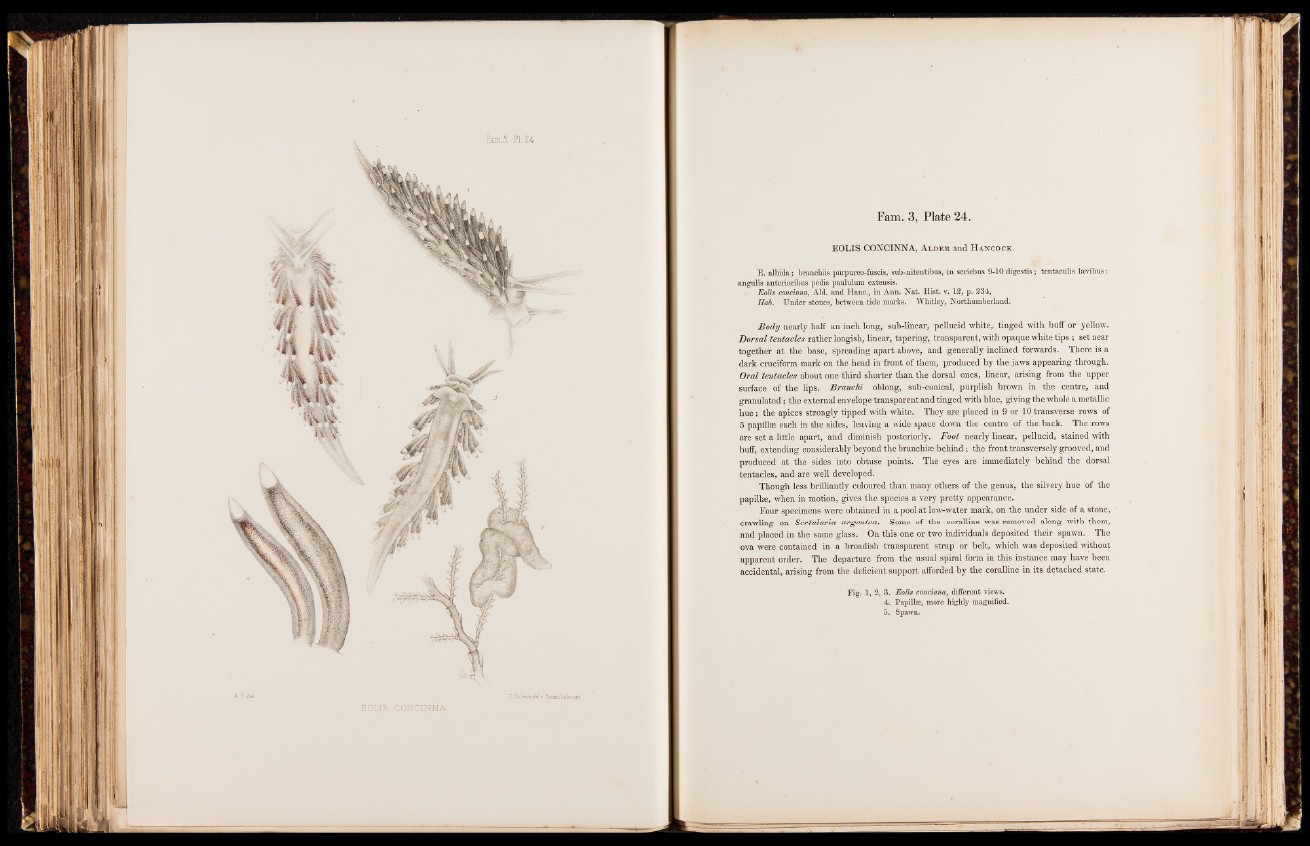
Farn. 3, Plate 24.
EOLIS CONCINNA, A l d e r a n d H a n c o c k .
E. albida; branchiis purpureo-fuscis, sub-nitentibus, in seriebus 9-10 digestis; tentaculis laevibus:
angulis anterioribus pedis paululum extensis.
Eolis concinna, Aid. and Hanc., in Ann. Nat. Hist. v. 12, p. 234,
Hab. Under stones, between tide marks. Whitley, Northumberland.
Body nearly half an inch long, sub-linear, pellucid white,, tinged with buff or yellow.
Dorsal tentacles rather longish, linear, tapering, transparent, with opaque white tips ; set near
together at the base, spreading apart above, and generally inclined forwards. There is a
dark cruciform mark on the head in front of them, produced by the jaws appearing through.
Oral tentacles about one third shorter than the dorsal ones, linear, arising from the upper
surface of the lips. Branchi oblong, sub-conical, purplish brown in the centre, and
granulated; the external envelope transparent and tinged with blue, giving the whole a metallic
h u e; the apices strongly tipped with white. They are placed in 9 or 10 transverse rows of
5 papillae each in the sides, leaving a wide space down the centre of the back. The rows
are set a little apart, and diminish posteriorly. Foot nearly linear, pellucid, stained with
buff, extending considerably beyond the branchiae behind; the front transversely grooved, and
produced at the sides into obtuse points. The eyes are immediately behind the dorsal
tentacles, and are well developed.
Though less brilliantly coloured than many others of the genus, the silvery hue of the
papillae, when in motion, gives the species a very pretty appearance.
Four specimens were obtained in a pool at low-water mark, on the under side of a stone,
crawling on Sertularia argentea. Some of the coralline was removed along with them,
and placed in the same glass. On this one or two individuals deposited their spawn. The
ova were contained in a broadish transparent strap or belt, which was deposited without
apparent order. The departure from the usual spiral form in this instance may have been
accidental, arising from the deficient support afforded by the coralline in its detached state.
Fig. 1, 2, 3. Eolis concinna, different views.
4. Papillae, more highly magnified.
5. Spawn.